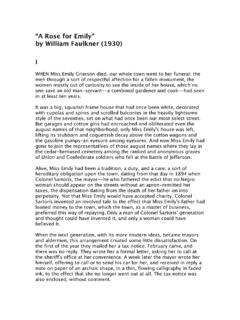Transcription of Characteristics of Gothic churches and cathedrals
1 Characteristics of Gothic churches and cathedrals In Gothic architecture, a unique combination of existing technologies established the emergence of a new building style. Those technologies were the ogival or pointed arch, the ribbed vault, and the flying buttress. The Gothic style, when applied to an ecclesiastical building, emphasizes verticality and light. This appearance was achieved by the development of certain architectural features, which together provided an engineering solution. The structural parts of the building ceased to be its solid walls, and became a stone skeleton comprising clustered columns, pointed ribbed vaults and flying buttresses. (See below: Light). A Gothic cathedral or abbey was, prior to the 20th century, generally the landmark building in its town, rising high above all the domestic structures and often surmounted by one or more towers and pinnacles and perhaps tall spires.
2 These cathedrals were the skyscrapers of that day and would have, by far, been the largest buildings that Europeans would have ever seen. Plan Most Gothic churches , unless they are entitled chapels, are of the Latin cross (or "cruciform") plan, with a long nave making the body of the church, a transverse arm called the transept and, beyond it, an extension which may be called the choir, chancel or presbytery. There are several regional variations on this plan. The nave is generally flanked on either side by aisles, usually singly, but sometimes double. The nave is generally considerably taller than the aisles, having clerestory windows which light the central space. Gothic churches of the Germanic tradition, like St. Stephen of Vienna, often have nave and aisles of similar height and are called Hallenkirche.
3 In the South of France there is often a single wide nave and no aisles, as at Sainte-Marie in Saint-Bertrand-de-Comminges. In some churches with double aisles, like Notre Dame, Paris, the transept does not project beyond the aisles. In English cathedrals transepts tend to project boldly and there may be two of them, as at Salisbury Cathedral, though this is not the case with lesser churches . The eastern arm shows considerable diversity. In England it is generally long and may have two distinct sections, both choir and presbytery. It is often square ended or has a projecting Lady Chapel, dedicated to the Virgin Mary. In France the eastern end is often polygonal and surrounded by a walkway called an ambulatory and sometimes a ring of chapels called a "chevet".
4 While German churches are often similar to those of France, in Italy, the eastern projection beyond the transept is usually just a shallow apsidal chapel containing the sanctuary, as at Florence Cathedral. Structure: the pointed arch Origins One of the defining Characteristics of Gothic architecture is the pointed or ogival arch. Arches of this type were used in the Near East in pre-Islamic as well as Islamic architecture before they were structurally employed in medieval architecture, and are thus thought to have been the inspiration for their use in France, as at Autun Cathedral, which is otherwise stylistically Romanesque.[7]. However, contrary to the diffusionist theory, it appears that there was simultaneously an ongoing structural evolution towards the pointed arch, for the purpose of vaulting spaces of irregular plan, or to bring transverse vaults to the same height as diagonal vaults.
5 This latter occurs at Durham Cathedral in the nave aisles in 1093. Pointed arches also occur extensively in Romanesque decorative blind arcading, where semi-circular arches overlap each other in a simple decorative pattern, and the points are accidental to the design. Functions The Gothic vault, unlike the semi-circular vault of Roman and Romanesque buildings, can be used to roof rectangular and irregularly shaped plans such as trapezoids. The other structural advantage is that the pointed arch channels the weight onto the bearing piers or columns at a steep angle. This enabled architects to raise vaults much higher than was possible in Romanesque architecture.[7]. While, structurally, use of the pointed arch gave a greater flexibility to architectural form, it also gave Gothic architecture a very different visual character to Romanesque, the verticality suggesting an aspiration to Heaven.
6 In Gothic Architecture the pointed arch is used in every location where a vaulted shape is called for, both structural and decorative. Gothic openings such as doorways, windows, arcades and galleries have pointed arches. Gothic vaulting above spaces both large and small is usually supported by richly moulded ribs. Rows of pointed arches upon delicate shafts form a typical wall decoration known as blind arcading. Niches with pointed arches and containing statuary are a major external feature. The pointed arch lent itself to elaborate intersecting shapes which developed within window spaces into complex Gothic tracery forming the structural support of the large windows that are characteristic of the style. Salisbury Cathedral has the tallest spire in England.
7 Height A characteristic of Gothic church architecture is its height, both absolute and in proportion to its width. A section of the main body of a Gothic church usually shows the nave as considerably taller than it is wide. In England the proportion is sometimes greater than 2:1, while the greatest proportional difference achieved is at Cologne Cathedral with a ratio of :1. The highest internal vault is at Beauvais Cathedral at 48 metres (157 ft). Externally, towers and spires are characteristic of Gothic churches both great and small, the number and positioning being one of the greatest variables in Gothic architecture. In Italy, the tower, if present, is almost always detached from the building, as at Florence Cathedral, and is often from an earlier structure.
8 In France and Spain, two towers on the front is the norm. In England, Germany and Scandinavia this is often the arrangement, but an English cathedral may also be surmounted by an enormous tower at the crossing. Smaller churches usually have just one tower, but this may also be the case at larger buildings, such as Salisbury Cathedral or Ulm Minster, which has the tallest spire in the world,[17] slightly exceeding that of Lincoln Cathedral, the tallest which was actually completed during the medieval period, at 160 metres (520 ft). The Gothic east end of Cologne Cathedral represents the extreme of verticality. (nave, dating to the 19th century). Vertical emphasis The pointed arch lends itself to a suggestion of height. This appearance is characteristically further enhanced by both the architectural features and the decoration of the building.
9 On the exterior, the verticality is emphasised in a major way by the towers and spires and in a lesser way by strongly projecting vertical buttresses, by narrow half-columns called attached shafts which often pass through several storeys of the building, by long narrow windows, vertical mouldings around doors and figurative sculpture which emphasises the vertical and is often attenuated. The roofline, gable ends, buttresses and other parts of the building are often terminated by small pinnacles, Milan Cathedral being an extreme example in the use of this form of decoration. On the interior of the building attached shafts often sweep unbroken from floor to ceiling and meet the ribs of the vault, like a tall tree spreading into branches. The verticals are generally repeated in the treatment of the windows and wall surfaces.
10 In many Gothic churches , particularly in France, and in the Perpendicular period of English Gothic architecture, the treatment of vertical elements in gallery and window tracery creates a strongly unifying feature that counteracts the horizontal divisions of the interior structure. Sainte Chapelle. Paris Light One of the most distinctive Characteristics of Gothic architecture is the expansive area of the windows as at Sainte Chapelle and the very large size of many individual windows, as at York Minster, Gloucester Cathedral and Milan Cathedral. The increase in size between windows of the Romanesque and Gothic periods is related to the use of the ribbed vault, and in particular, the pointed ribbed vault which channeled the weight to a supporting shaft with less outward thrust than a semicircular vault.






